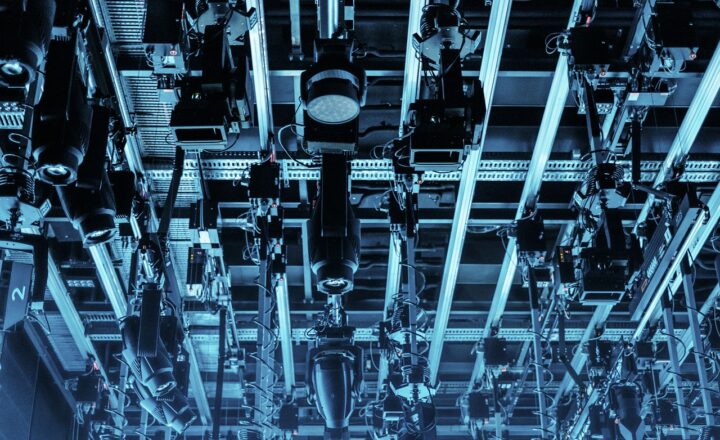Choosing a Laptop for Graphic Design: Display, Power, and Software Compatibility
November 13, 2024

Choosing the right laptop for graphic design can make a significant difference in your creative workflow. Graphic design is a demanding field that requires high-quality displays, sufficient processing power, and compatibility with design software. With an array of options available, selecting the best laptop can become overwhelming. In this article, we will break down the essential factors to consider when choosing a laptop tailored for graphic design needs.
1. Understanding Your Design Needs
Before delving into specific models or features, it’s crucial to identify your specific design needs. Are your projects primarily in Adobe Photoshop and Illustrator, or do you require advanced 3D rendering capabilities with software like AutoCAD or Blender? Your primary focus will dictate the specifications you need.
A graphic designer might prioritize swift processing speeds and powerful graphics to handle 3D processes, while a digital illustrator may focus more on color accuracy and even screen size for artistic detail.
2. Display Quality: The Heart of Graphic Design
Graphic design often hinges on color accuracy and screen resolution. When it comes to display quality, there are several key specifications to consider:
- Resolution: Aim for at least a Full HD (1920 x 1080) display. For professionals working with intricate graphics, a 4K (3840 x 2160) resolution can provide unparalleled detail and clarity for high-resolution work.
- Color Accuracy: Look for laptops that cover 100% of the sRGB color gamut or higher, such as Adobe RGB, to ensure the fidelity of colors in your designs.
- Display Type: Opt for an IPS (In-Plane Switching) panel, as these offer better viewing angles and color reproduction compared to TN (Twisted Nematic) panels.
A great display allows for a better design experience, reducing strain on your eyes while ensuring your work looks as intended across different devices.
3. Performance: Powering Your Creativity
Performance is paramount for graphic design. Choosing the right CPU, GPU, and RAM can profoundly affect your efficiency:
- Processor (CPU): A powerful CPU is essential for rendering graphics and multitasking. Look for Intel i7 or i9 processors, or AMD Ryzen 7 or 9 series for superior performance.
- Graphics Card (GPU): The graphics card is vital for 3D rendering, video editing, and overall graphic processing. Consider laptops with dedicated GPUs such as NVIDIA GeForce RTX series or AMD Radeon series for optimal performance.
- Memory (RAM): At minimum, 16GB of RAM is recommended for standard design tasks, while 32GB or more is ideal for more demanding projects or software applications like Adobe After Effects.
The right performance specs can significantly reduce rendering times and make multitasking easy, allowing you to focus more on your creativity rather than waiting for processes to complete.
4. Storage Considerations: Speed and Space
When working with graphic files, storage capacity and speed are vital. You have two primary considerations:
- SSD vs. HDD: Always opt for an SSD (Solid State Drive) for your operating system and primary applications. SSDs provide superior speed compared to traditional HDDs, significantly reducing boot and load times. Aim for at least 512GB SSD space for better efficiency and file management.
- Expandability: Check if the laptop allows you to upgrade the storage in the future. Being able to add storage is crucial for long-term needs as your design projects grow.
With proper storage, your workflow can maintain seamless performance even when handling large design files.
5. Software Compatibility: Ensure a Smooth Experience
The software landscape for graphic design is diverse, with popular choices such as Adobe Creative Suite, CorelDRAW, and more. Ensure your chosen laptop meets the minimum specifications needed to run these tools effectively:
- Operating System Compatibility: While many design tools are available on both Windows and macOS, consider which operating system you are more comfortable with, or check software compatibility for your projects.
- Updates and Support: Ensure that the laptop manufacturer provides good software support and updates to ensure compatibility with the latest design tools.^
Staying current with software and operating system updates can greatly enhance your productivity and the ability to leverage cutting-edge design features.
6. Portability vs. Performance: Striking a Balance
Portability can be essential for graphic designers who need to work on the go. Think about:
- Weight and Size: Opt for a laptop that balances performance with portability. Aim for models under 4 pounds if you frequently travel with your laptop.
- Battery Life: Graphic design software can drain battery life quickly. Look for laptops offering at least 8 hours of battery life to get through a day of work without searching for an outlet.
Finding the right balance allows you to maintain productivity whether you’re working from a studio, a café, or on a long commute.
7. Budgeting for Your Laptop
Your budget will ultimately play a role in your laptop’s choice. Here are a few tips:
- Set a Realistic Budget: Determine how much you are willing to invest based on your needs. A good laptop for graphic design typically falls in the range of $1,000 to $3,000 based on specifications and brand.
- Consider Refurbished Models: Look for certified refurbished laptops that may save you money while still offering excellent performance.
Remember that investing in a quality laptop is vital as it is a crucial tool in your design career, leading to greater efficiency and creative output.
Conclusion
Choosing the right laptop for graphic design is undoubtedly a nuanced decision that requires careful consideration of your specific needs. Focus on key aspects like display quality, performance specs, storage, software compatibility, and portability to find a model that complements your creative process. By making informed choices, you can acquire a laptop that not only meets your design requirements but also helps enhance your overall workflow, ultimately fostering your creativity.
Investing time in research and understanding your needs will lead you to a laptop that will support and amplify your graphic design efforts for years to come.







